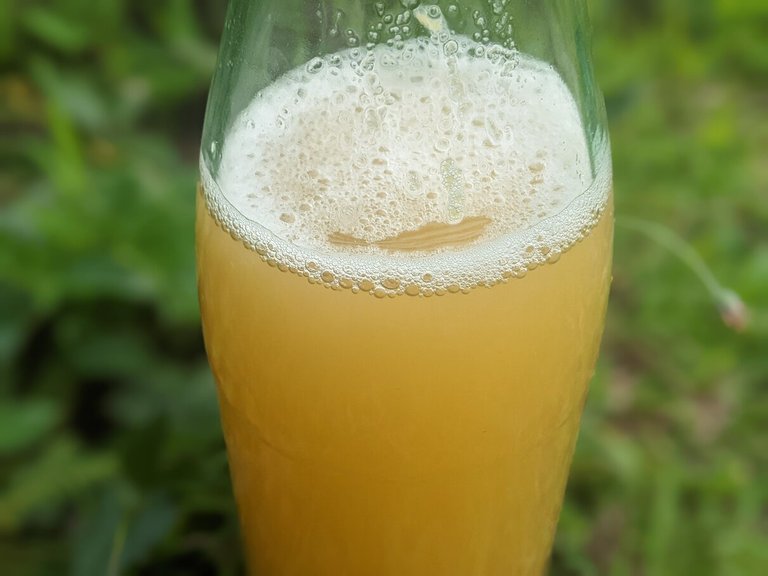
This week’s Qurator's: Hive Top Chef is all about fermentation. If you have been following my blog, you might have noticed that we LOVE fermented foods and drinks. Kimchi, vegan cashew yogurt, preserved lemons, tepache, fermented beets, and kombucha are just a few of our fermentation projects.
Just in time for the contest today, our new batch of apple cider vinegar is ready to add a tangy touch to our marinades, dressings, pickled veggies, cashew sour cream, and much more.
Do you remember my post about how to turn pineapple scraps into the wonderful drink called tepache? Well, today I bring you another recipe to turn apple peels and cores that would normally end up in the bin or compost pile into something very valuable. APPLE CIDER VINEGAR or ACV for short.
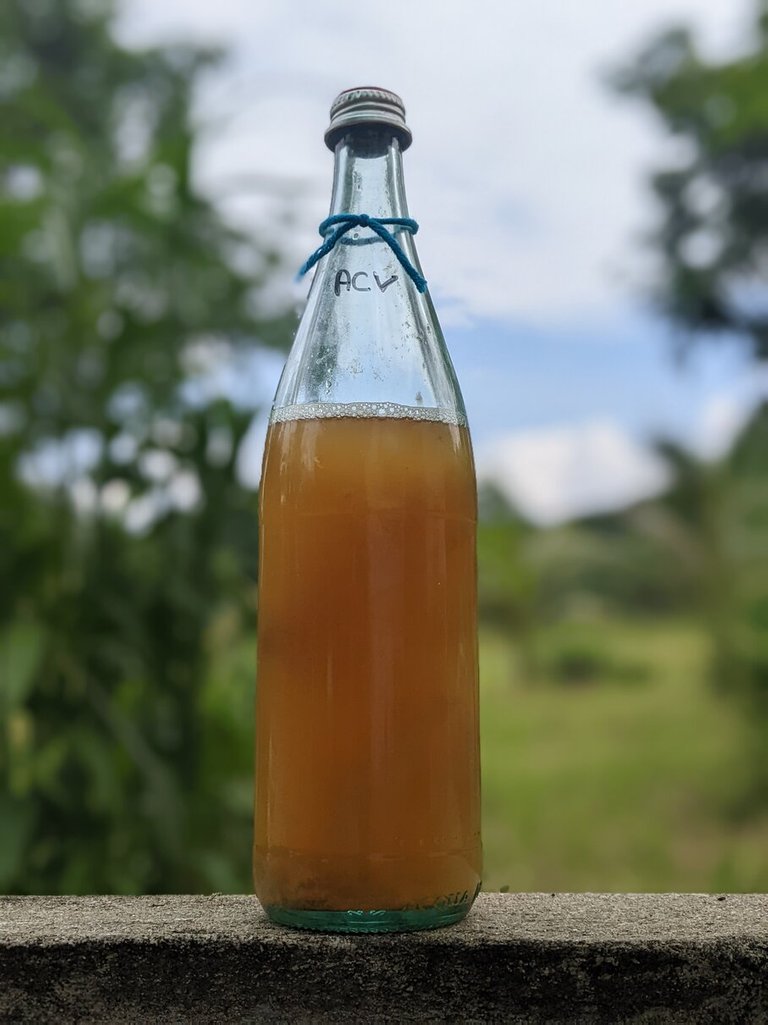
ACV as a Cure-for-All
ACV has been used for centuries as a disinfectant and natural cure to treat coughs and infections. Today it is praised by many as a cure-for-all. Going from being a great hair conditioner to treat damaged hair and soothing minor sunburns to regulating blood sugar levels and boosting heart health.
Though there is no doubt apple cider vinegar is a valuable item in your natural medicine cabinet, many claims still need to be backed up by science. However, we do not always need science to prove the effects of a natural substances on our health and happiness.
And if you are not using it as a cure-for-all, it adds magic to many of your dishes!
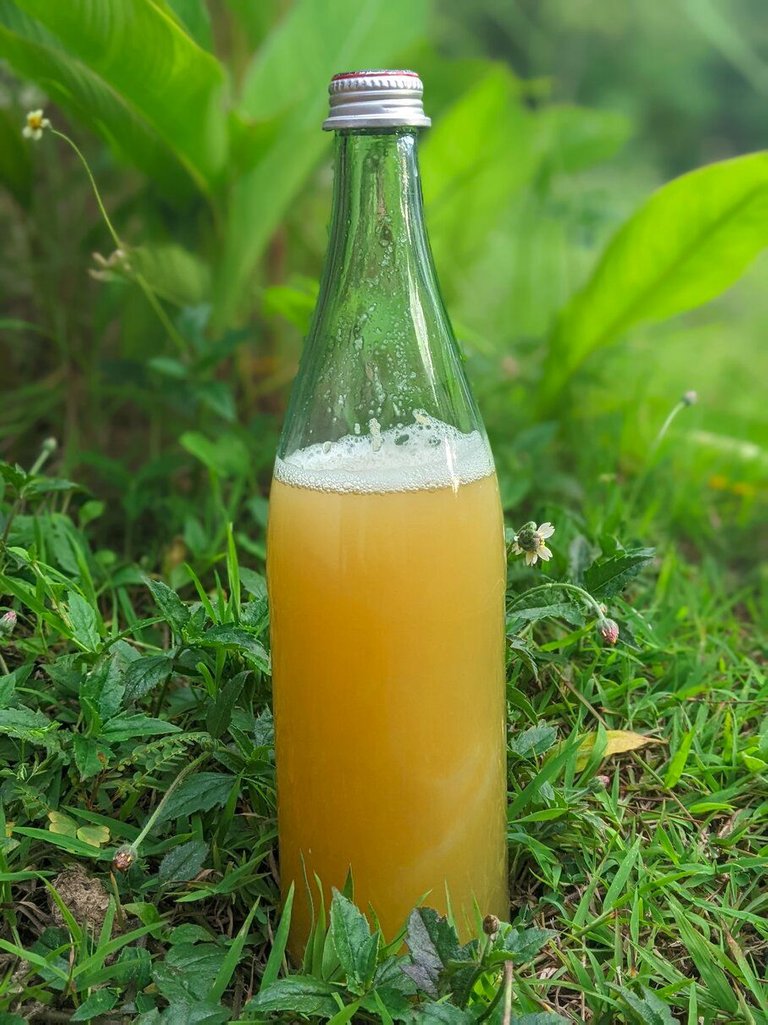
What is ACV?
Apple cider vinegar is made by fermenting the sugar from apples into vinegar. Though there are a few ways to make apple cider vinegar, I use wild fermentation, meaning wild yeast and bacteria from the environment will do the job for you.
In the first step, a wild yeast that occurs naturally in the air will ferment the apples, sugar (maple syrup or honey), and water into weak alcohol or cider. Then a bacteria called acetobacter will take over the job and further ferment the cider into vinegar.
Another way to make apple cider vinegar is by using “the Mother” - a mixture of yeast and bacteria. This is a byproduct of the vinegar’s fermentation process.
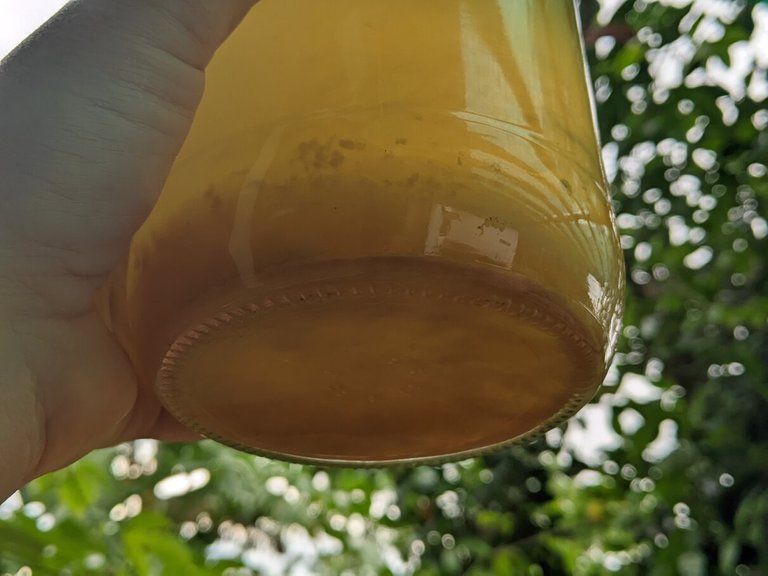
Many commercial ACVs are now being branded with the 'Mother' on the bottle, which attributes to many of its beneficial properties. It is what gives the vinegar that cloudy appearance.
By many people, however, this cloudiness is mistaken for the ACV being off. That's why many brands now remove the mother through filtering to create a clear end product.
HOW TO MAKE YOUR OWN APPLE CIDER VINEGAR AT HOME
If you’ve never made homemade, apple cider vinegar (ACV), you will be amazed by how simple it is. As I have said before, most fermentation processes are super easy. To be fair it all comes down to a waiting game. Which to me is the most difficult part.
PLUS, it’s a great way to use up leftover apple scraps.
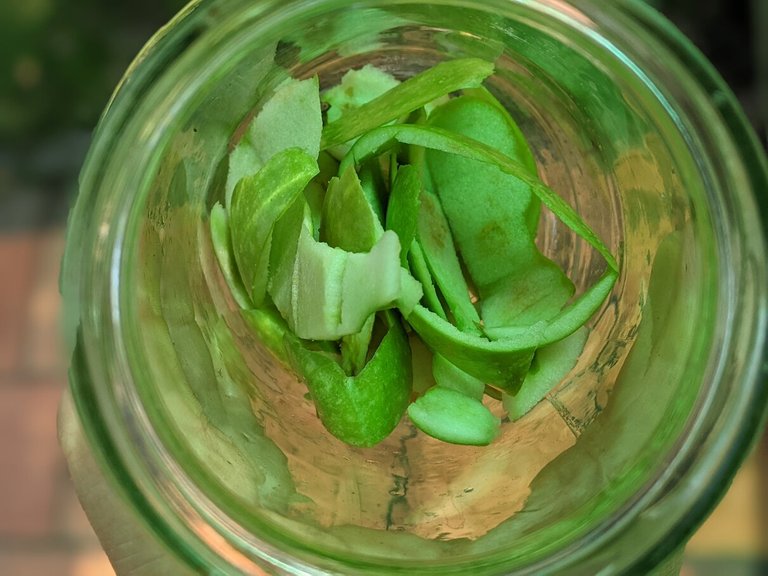
INGREDIENTS (MAKES 1 BOTTLE)
- The peels and cores of 4 apples
- 3.5 cups filtered water
- ¼ cup of good quality maple syrup or raw honey if not 100% vegan
FYI: Any apple variety can be used to make ACV, though which one you use will affect the flavor of the end product. This is a fun way to experiment. You can use different apple varieties or just one to compare their different flavors.
Also, If using maple syrup, you might have to shake/stir a little longer for better consistency. I used maple syrup this time but I have used raw honey before too. Both work. So use whatever you have available or feel comfortable with.
Though I mainly live a vegan lifestyle, there are 2 exceptions I sometimes make. One is raw, wild jungle honey if we come across it, and the other is eggs from the chickens I saved from becoming somebody’s dinner. The three of them now live a happy, worry-free life in our garden. Even though we don’t have a rooster, you can’t stop them from laying eggs. These, however, are the only eggs I eat as I know where they came from and no animal has suffered for these.
Anyhow enough about the choices we make in life, let’s talk fermentation and ACV again.
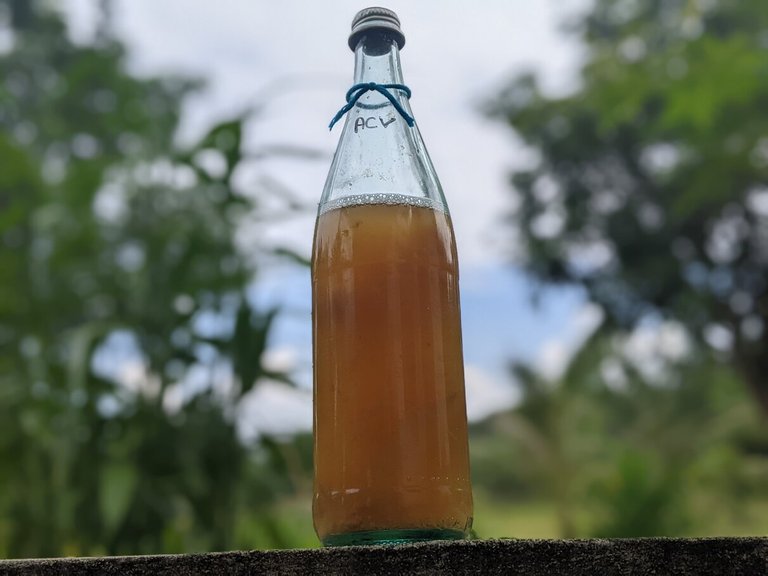
INSTRUCTIONS
Add the apple scraps to a clean jar.
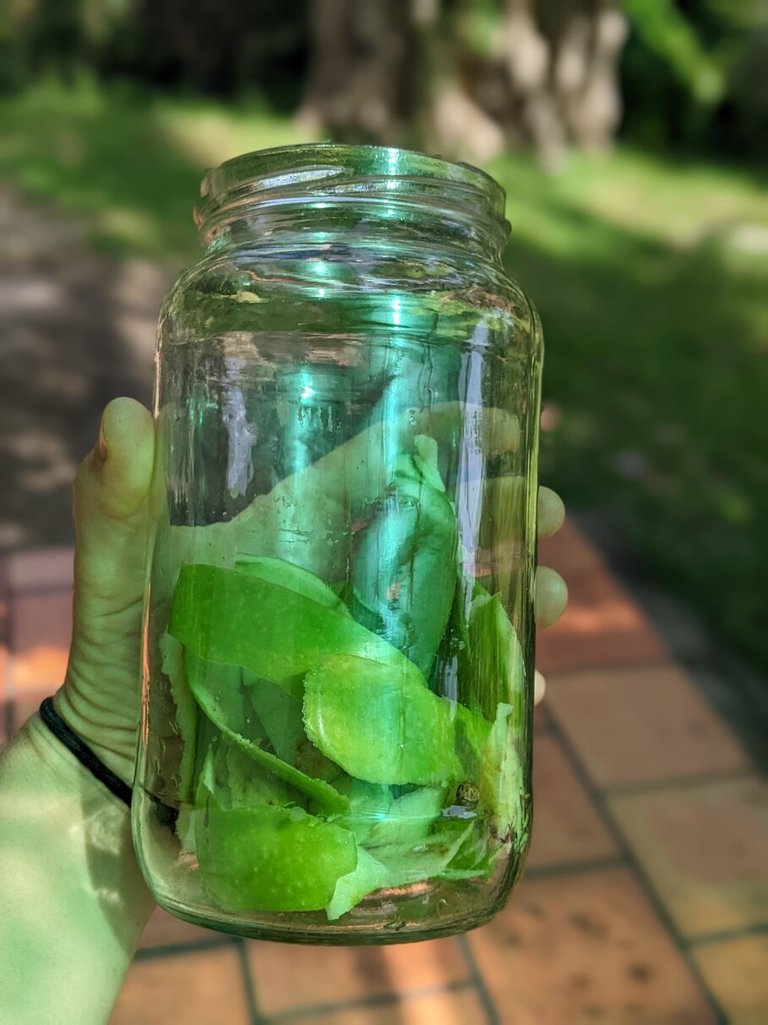
Add the water and maple syrup to a clean jar or bowl. Shake/stir well to mix well.
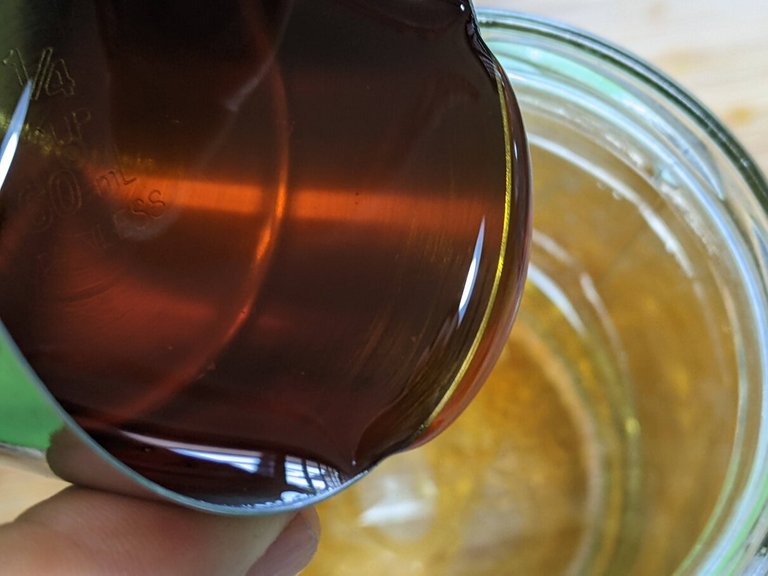
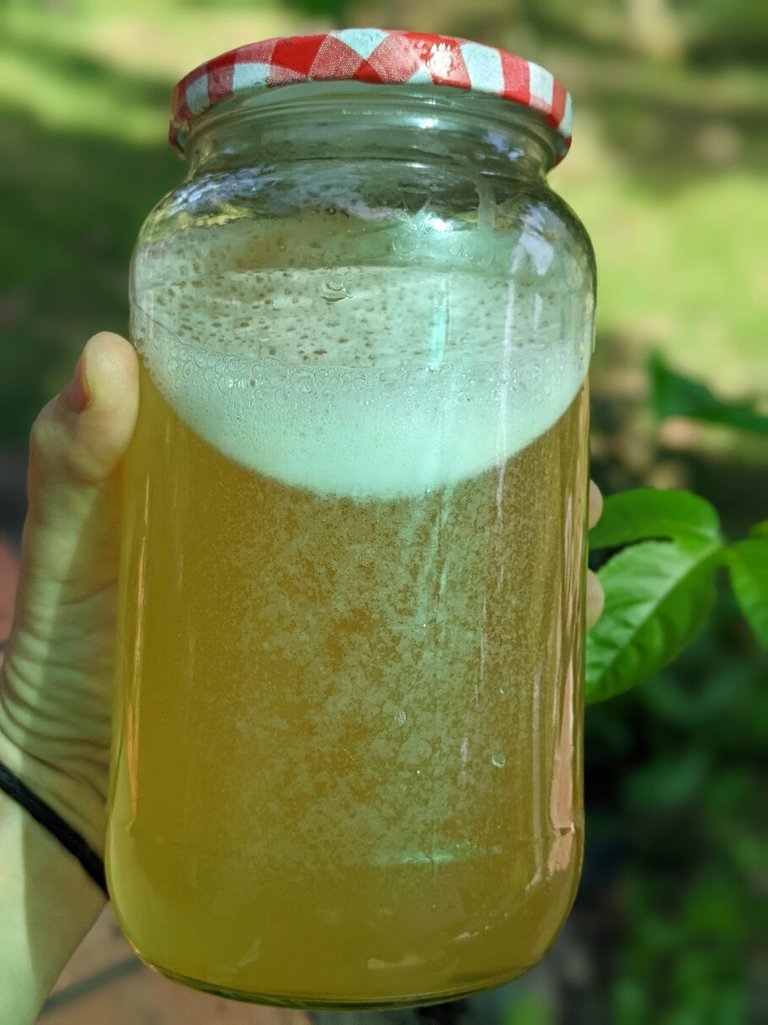
Pour the water/maple mix over the apple scraps and stir well. Cover with a clean towel, cheesecloth, or coffee filter and secure with a rubber band.
FYI: On the first day I only added the scraps of 2 apples of which I used the flesh in my smoothie. On the second day, I added the scraps of 2 more. This is absolutely fine. I didn’t want to add 4 apples to my smoothie and I also didn’t want to keep the scraps from the first 2 in the fridge for a day as they would turn brown.
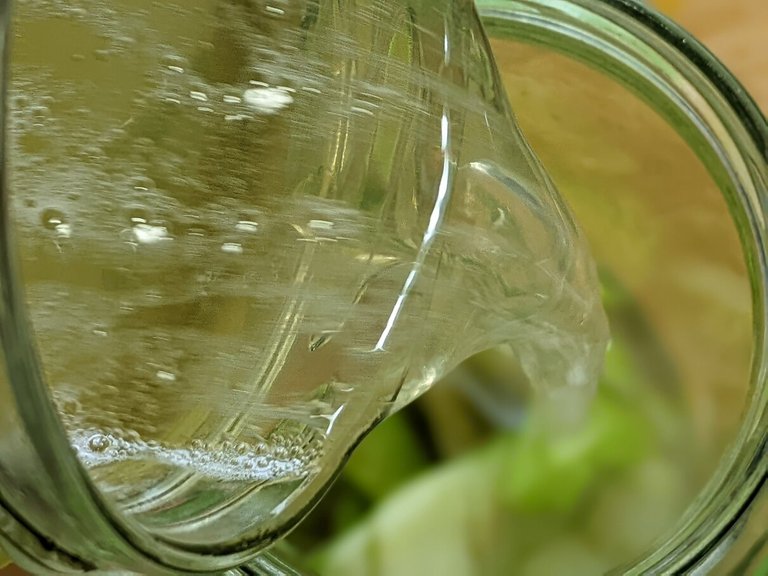
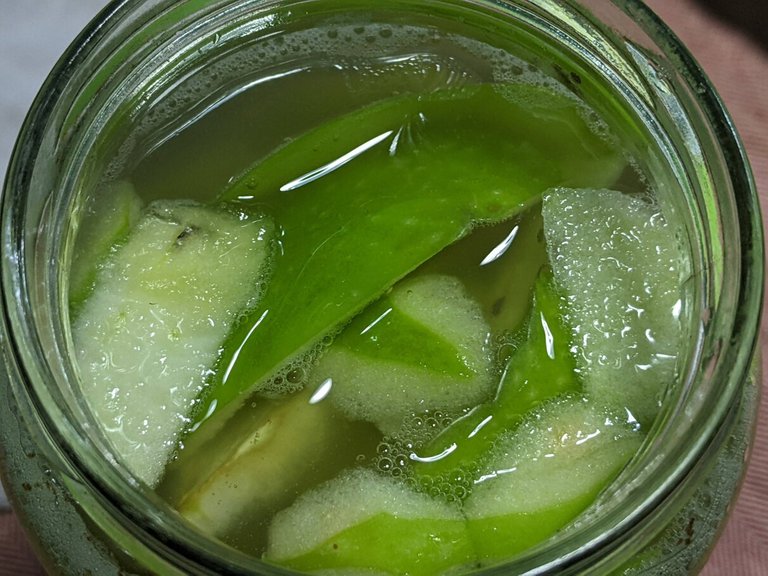
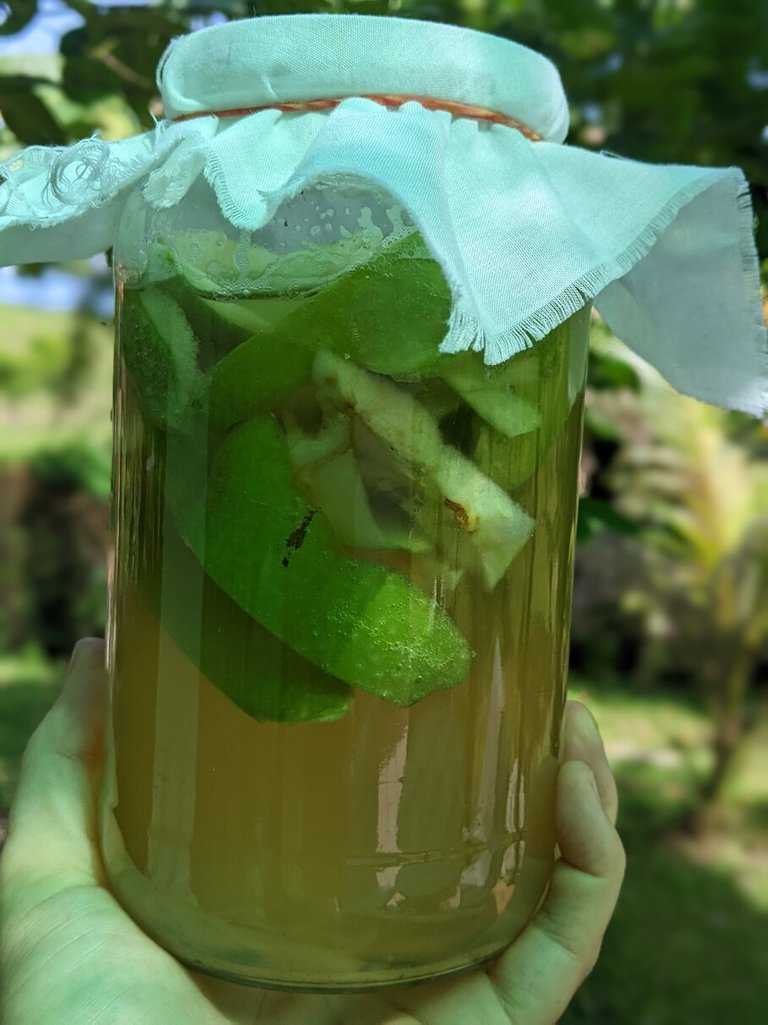
Leave in a warm location out of direct sunlight. Every day, shake or gently stir the jar to mix up the contents and push the scrapes back down under the water. Bubbles will appear on the surface, this is a good sign that fermentation is happening.

Every day, the apple scraps will float to the top and change color. That's fine. Just push them back under the water. No need for a fermentation weight to keep the scrapes submerged. Unlike other ferments, think of sauerkraut or fermented garlic paste, this fermentation needs air to turn the apple scraps into the vinegar.
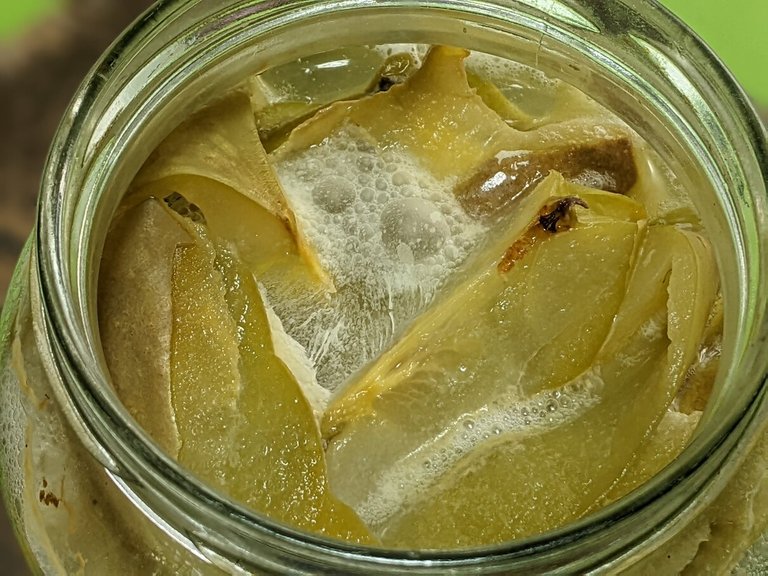
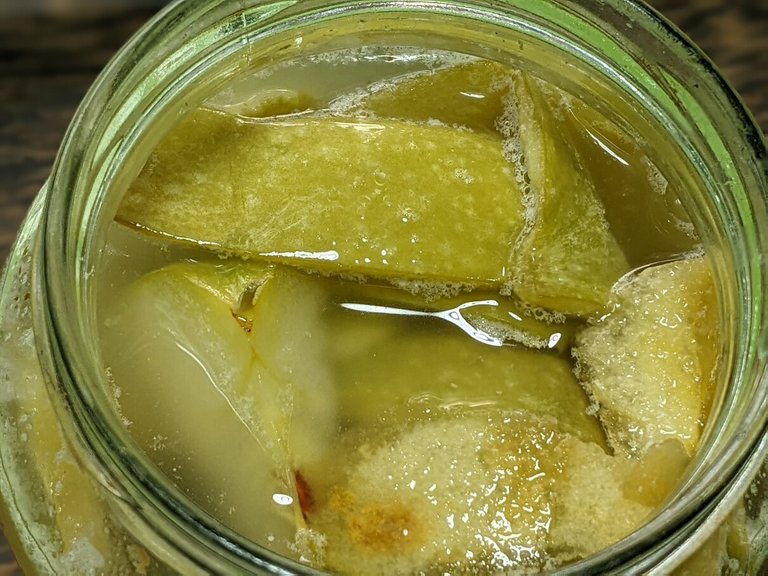
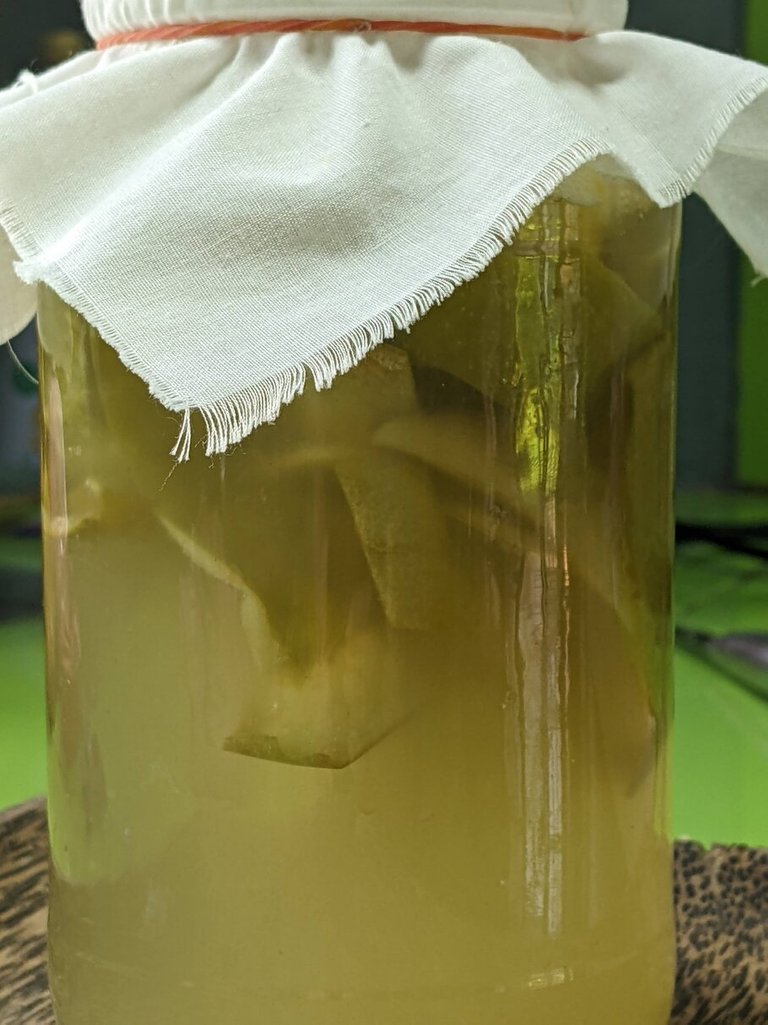
After about a week, the apple pieces will start to sink to the bottom of the jar. This means that the alcohol fermentation has ended.
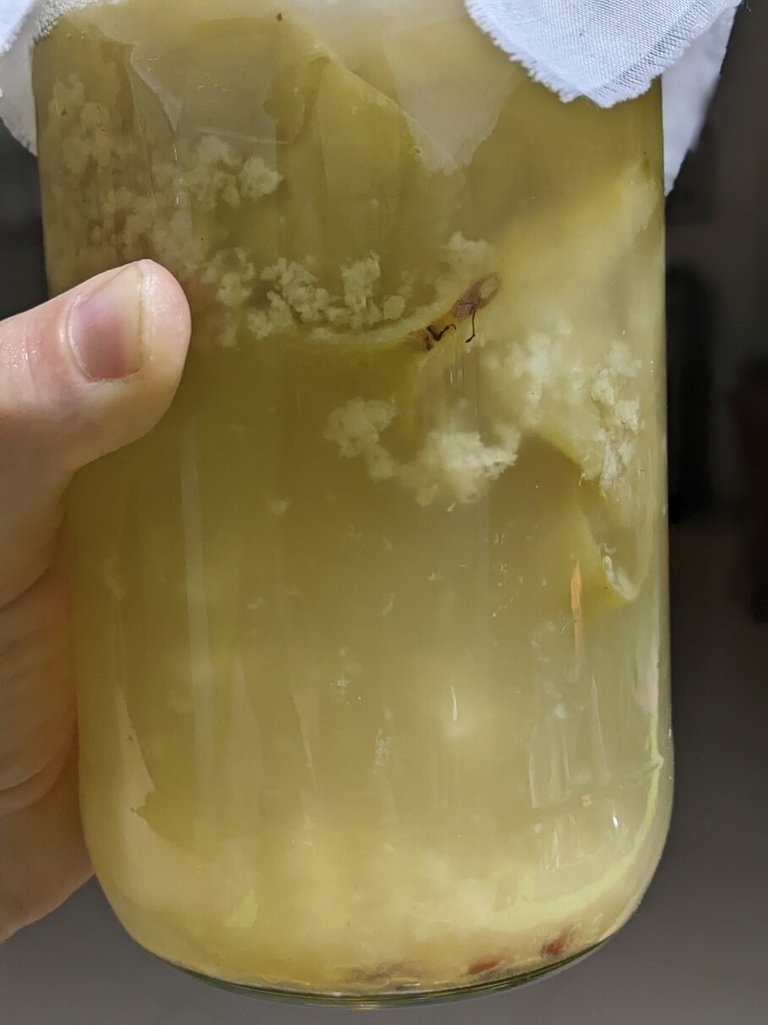
When this happens, strain the apple pieces from the liquid.
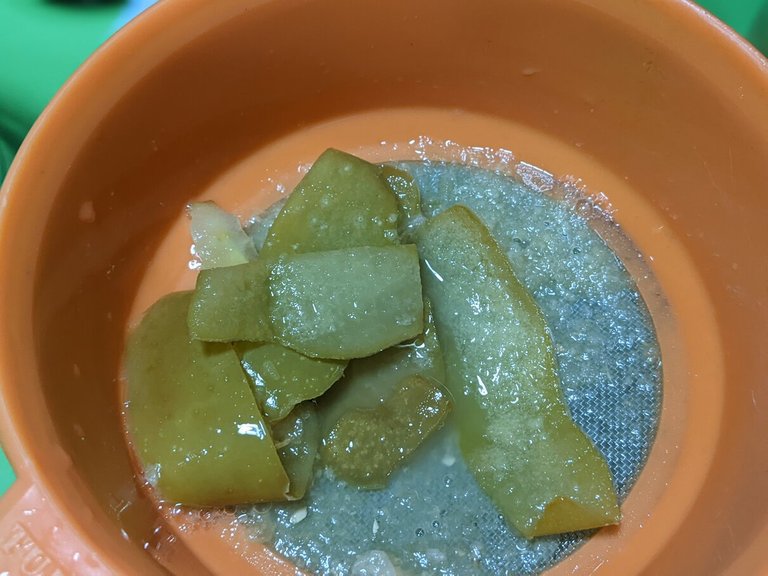
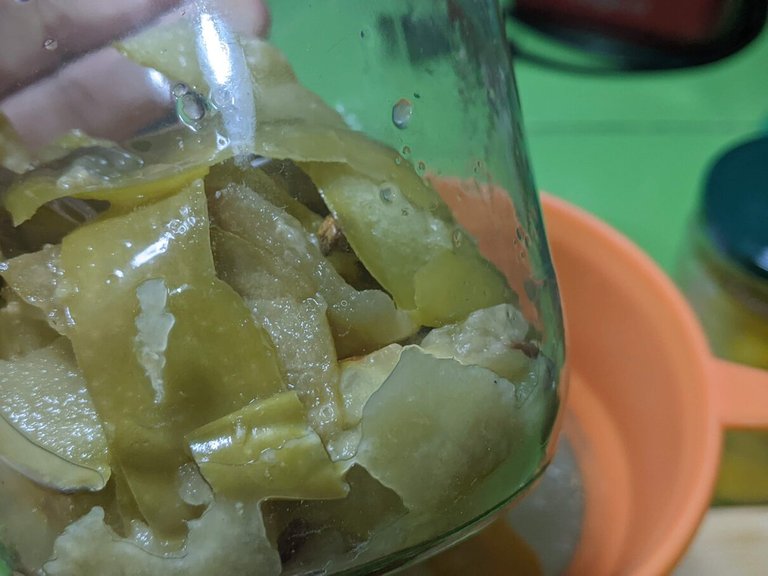
Return the liquid (aka hard cider) to the jar. Cover again with a clean towel, cheesecloth, or coffee filter and secure with a rubber band. Leave in a warm location out of direct sunlight for another 3 to 4 weeks. This will depend on the climate you live in.
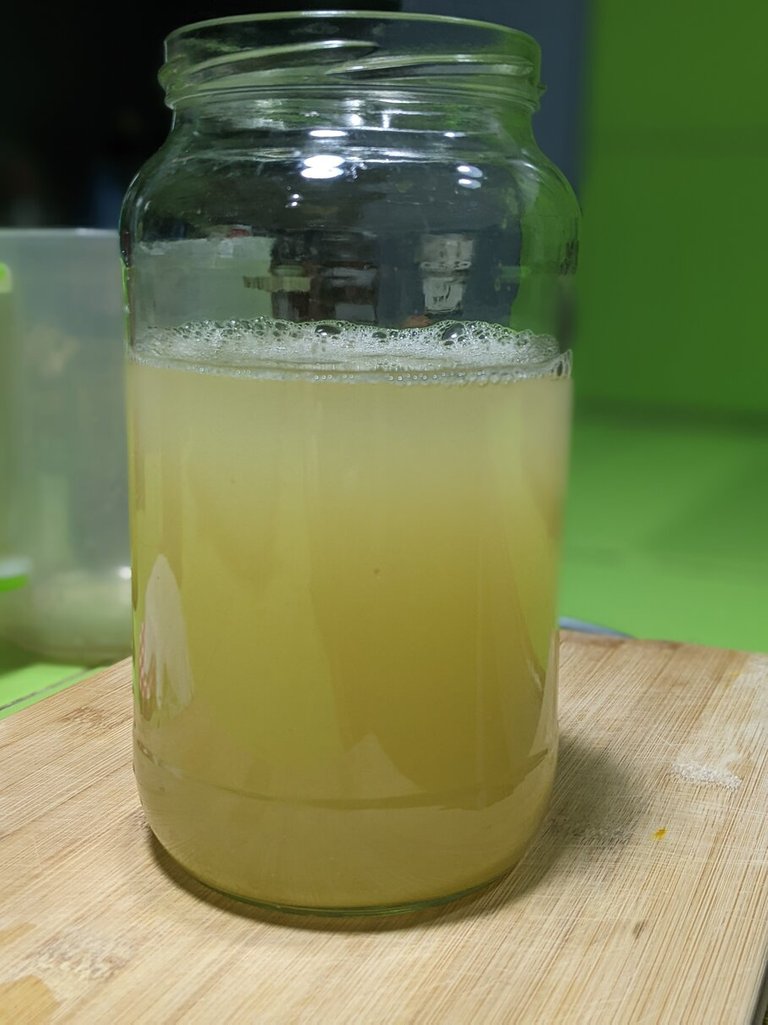
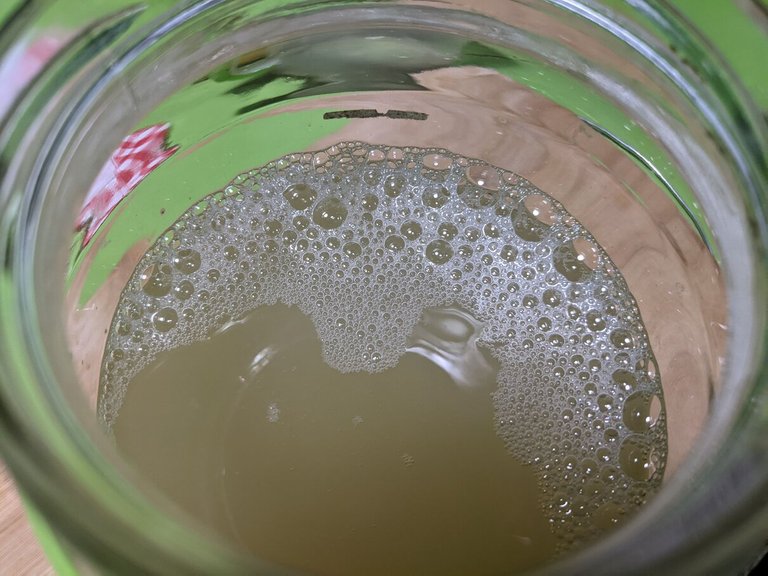
You can start testing the vinegar after 3 weeks. You will see some bigger pieces floating around in your jar. This is normal. It's what they call the "mother". Just as you have a scoby in kombucha, a mother is a byproduct of yeast and bacteria. This can be used to speed up the process of your next batch of ACV. Though I usually start from scratch again.
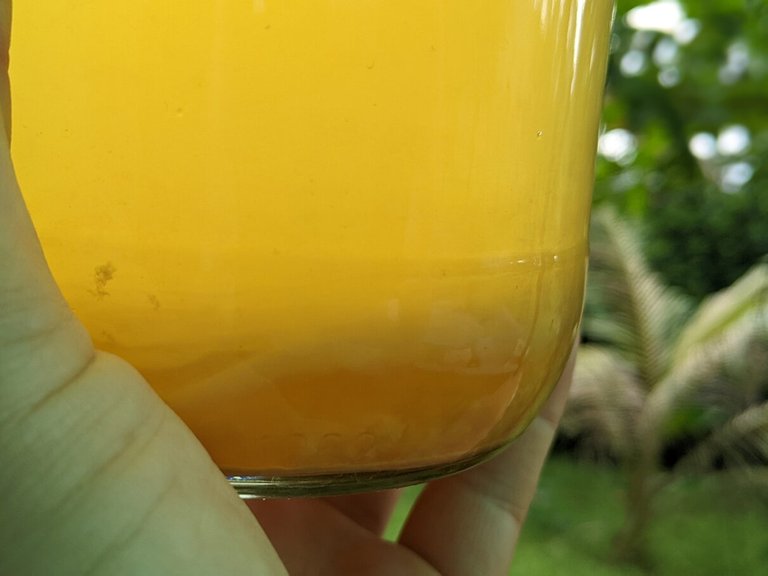
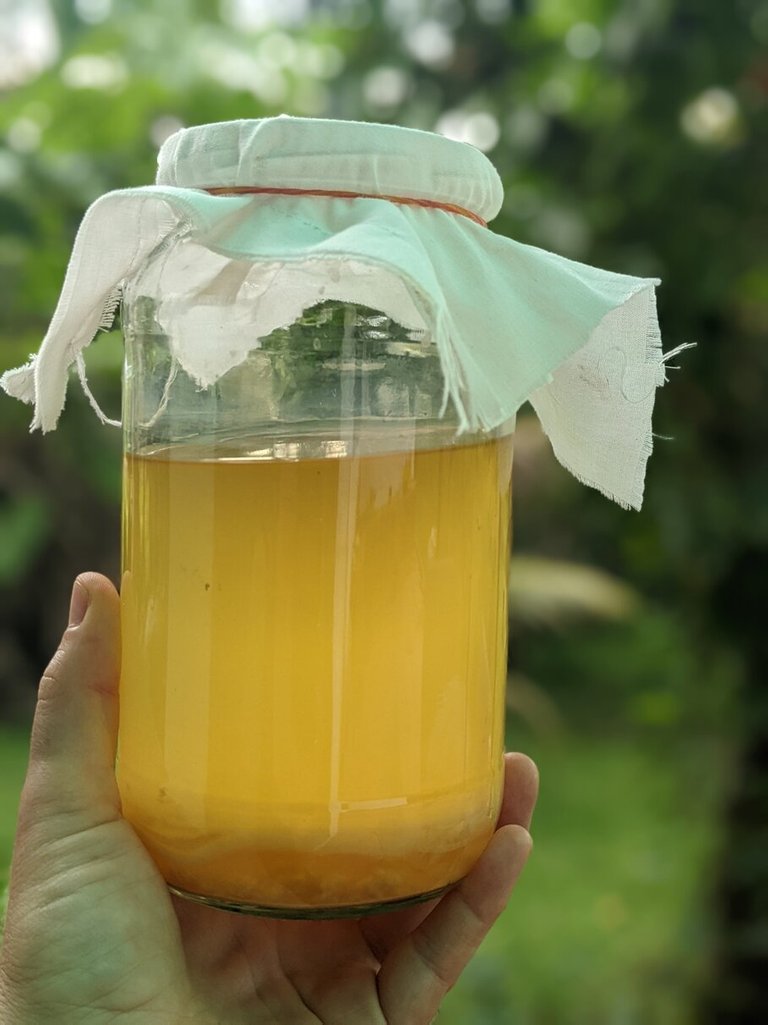
When you are happy with the vinegary, tangy taste, bottle the vinegar in a clean bottle. As with any normal vinegar, you can keep the bottle at room temperature on your counter or in your kitchen cupboard.
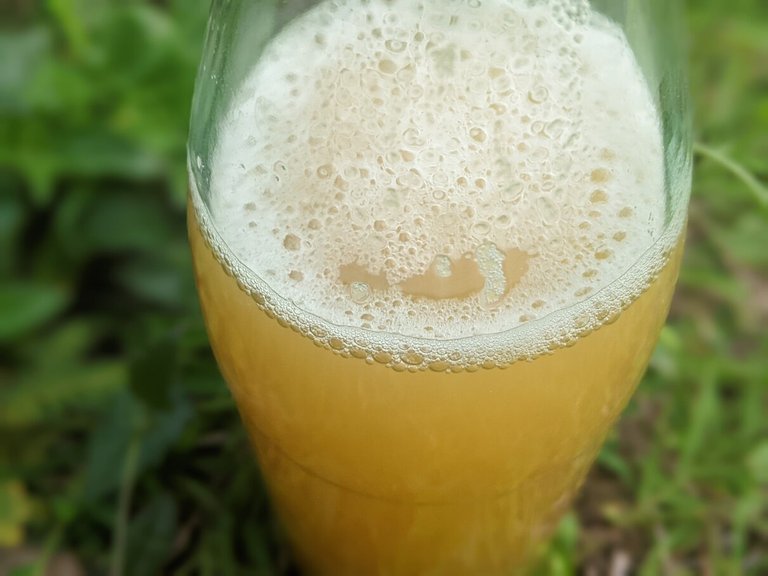
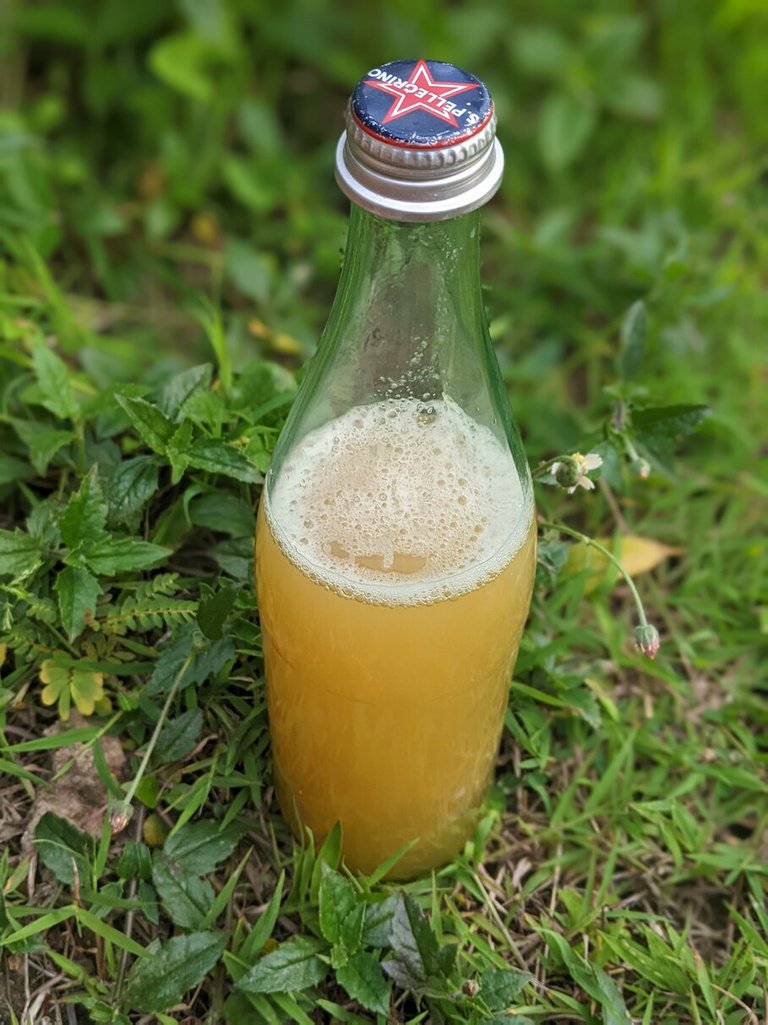
FYI: this is how the ACV (see pics below) looks when it has been sitting for a few days undisturbed on the counter. See the mother?
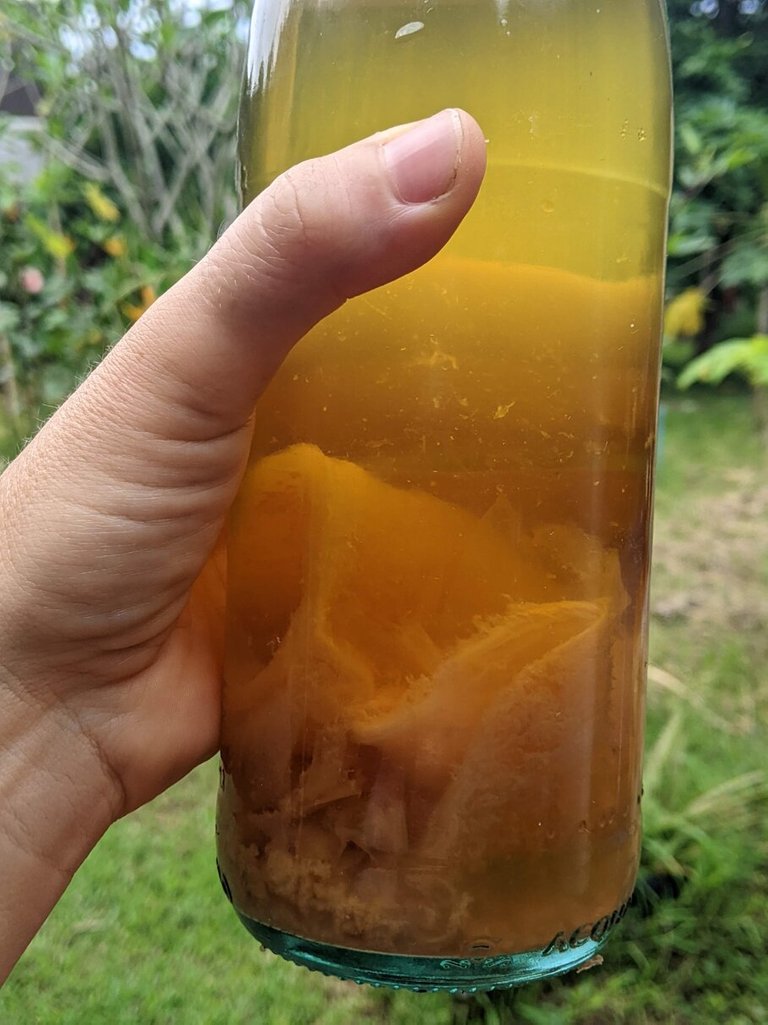
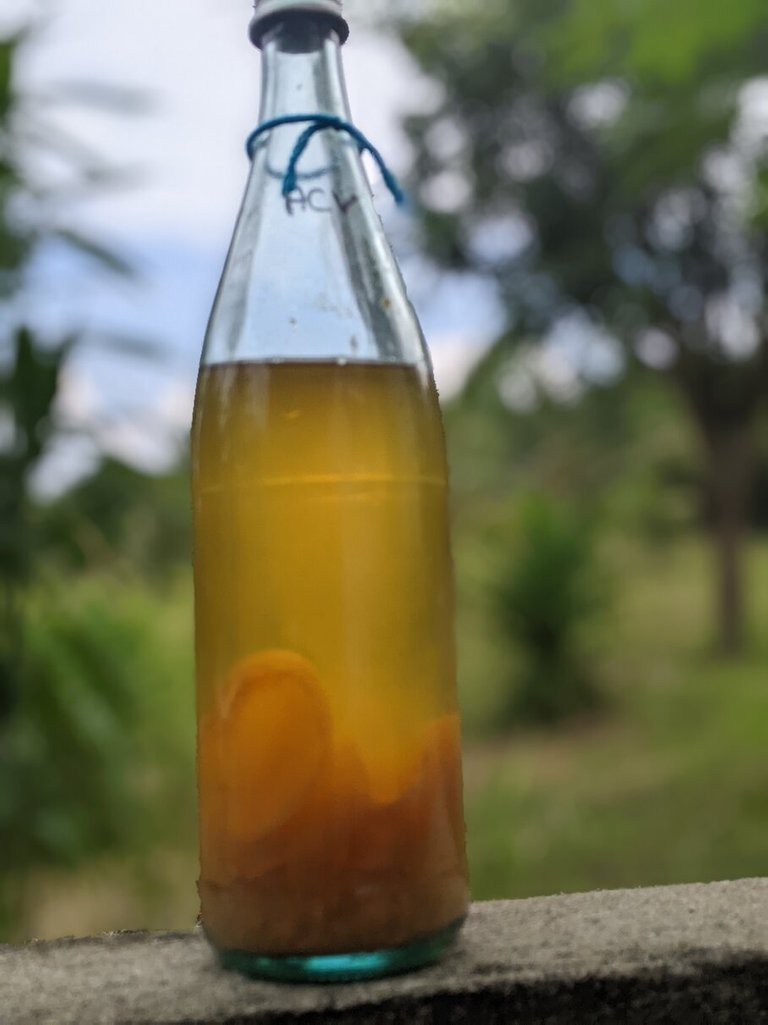
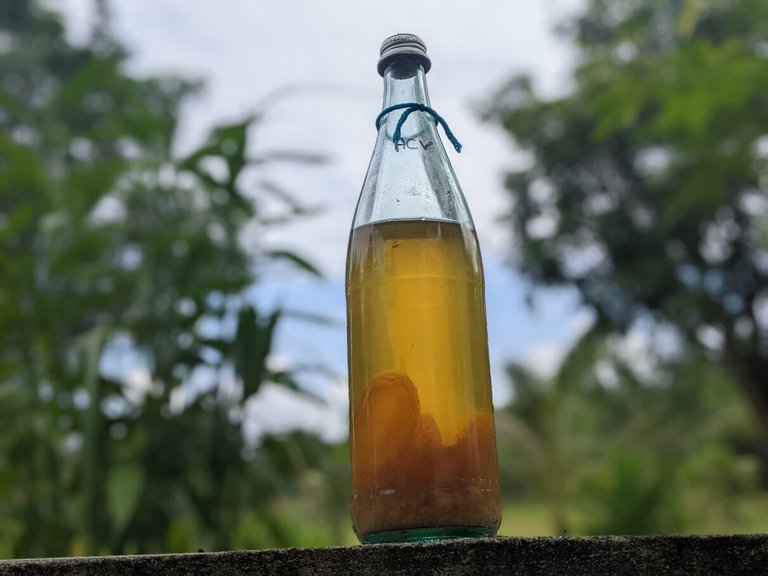
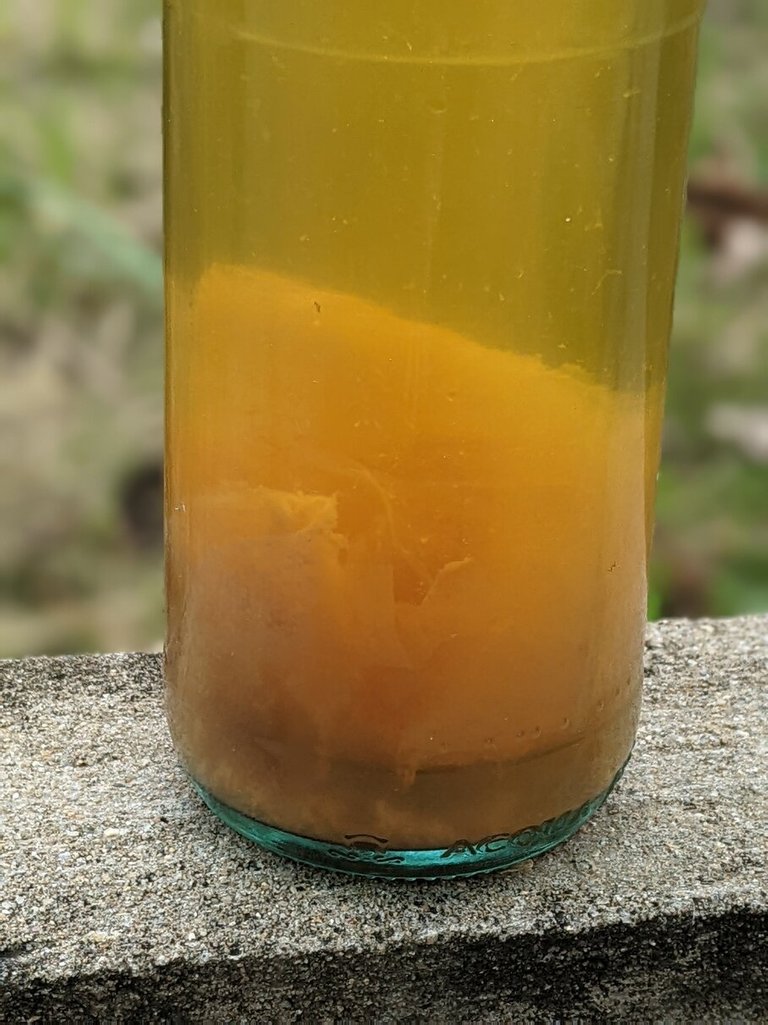
To use just give it a gentle shake so make sure you get all the ACV goodness into your food.
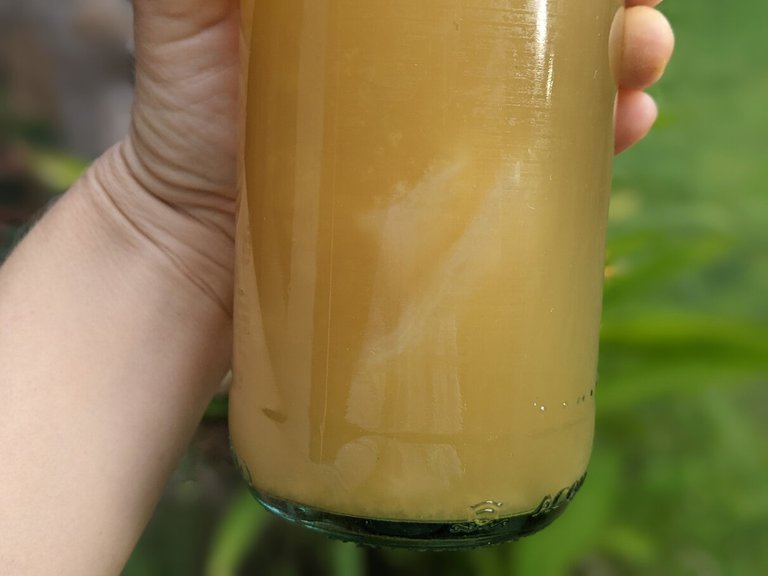

HAPPY FERMENTING! WISHING YOU ALL A HAPPY AND HEALTHY DAY ღ ღ ღ

ALL CONTENT IS MINE AND ORIGINAL!
PICTURE(s) TAKEN WITH GOOGLE PIXEL 3 XL
LET'S CONNECT!
🥑🍓🍆 FIND MORE YUMMY PLANT-BASED CREATIONS BELOW 🥑🍓🍆
MORROCAN-STYLE VEGGIE STEW WITH PRESERVED/FERMENTED LEMONS
PRESERVED AKA LACT0-FERMENTED LEMONS
FUSION FOOD - ASIAN-STYLE TACOS WITH HOMEMADE PEANUT TOFU AND KIMCHI
VITAMIN NATURE - WHY YOU SHOULD GET MORE OF IT (+ TRIP TO OMAL WATERFALL)


 You've been curated by
You've been curated by